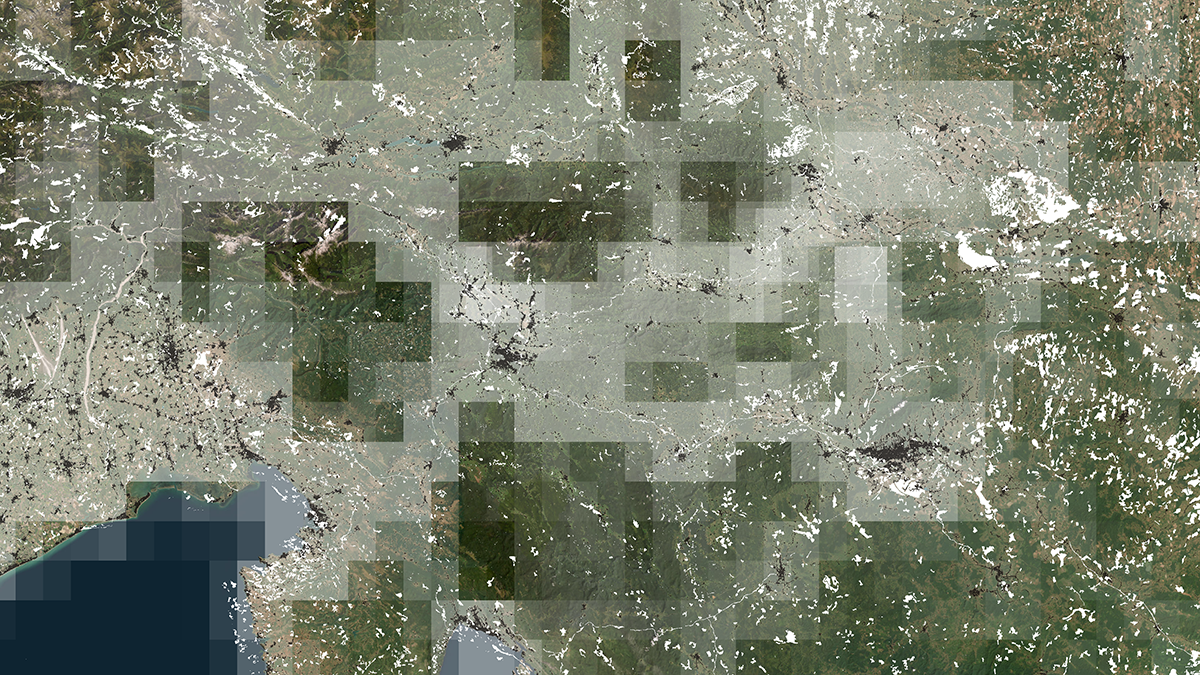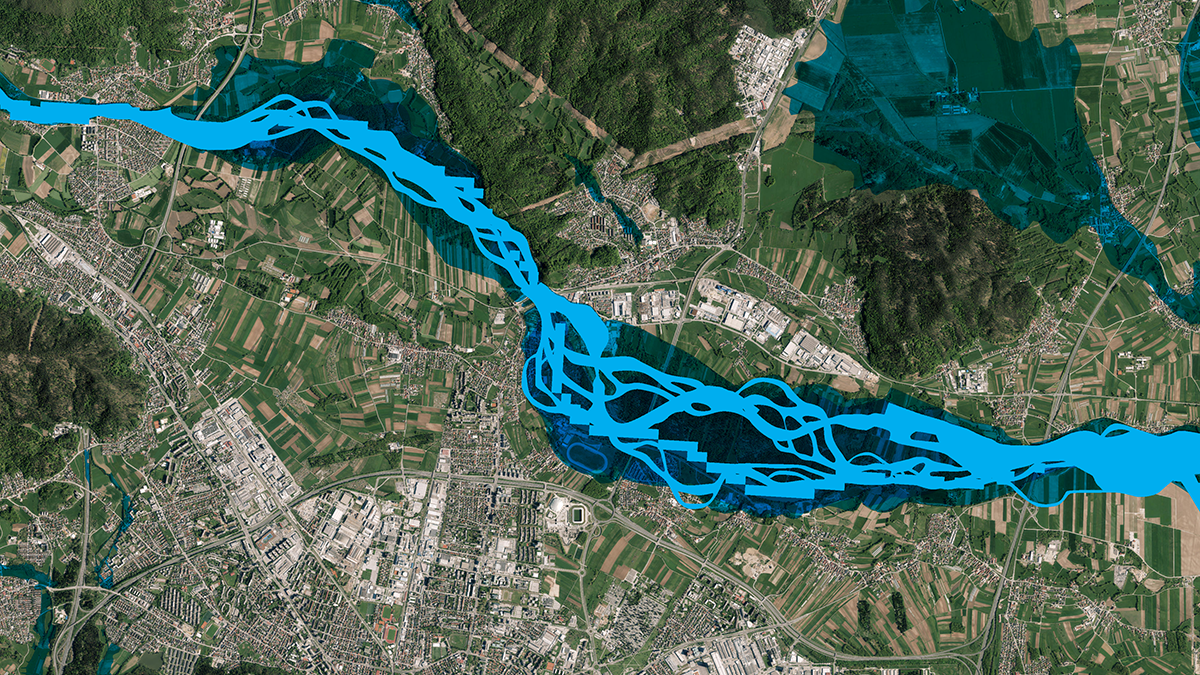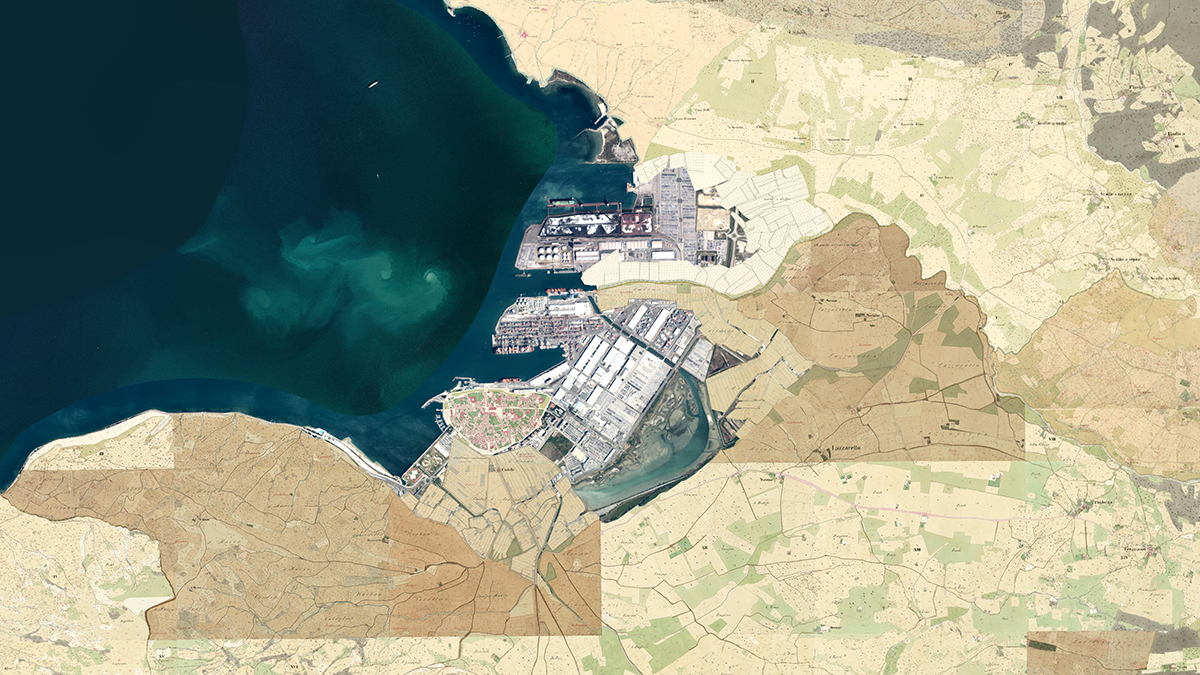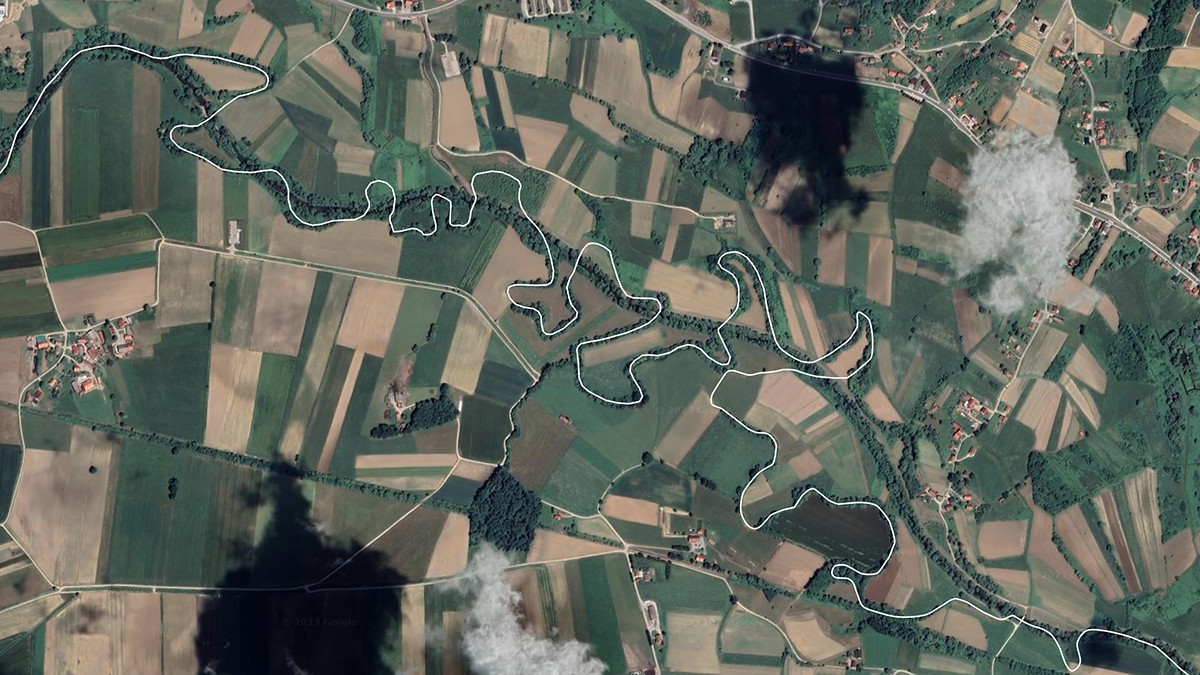Atlas Slovenia
Atlas Slovenia │ 2023 │ artist: Miha Turšič │ curator and author of text: Adrijan Praznik │ producers: Gašper Beg, Adrijan Praznik │ translation and proofreading: Jezikovna zadruga Soglasnik │ project producer: LokalPatriot Institute, Simulaker Gallery and konS ≡ Platform for Contemporary Investigative Art
"What you see in mobile map apps is a flat and square Earth. What you observe is a representation of the available data and the lack of it. What you are looking at is not an actual environmental landscape, but rather a map of interests."
The exhibition Atlas Slovenia by Miha Turšič is an artistic research that questions existing environmental imaginaries of Slovenia as a green and natural country. The exhibition explores land use and the culturalisation and commodification of the earth's surface from the beginnings of agriculture and the industrial revolutions to the present day, and presents the safeguards put in place by state regulators and civil society initiatives. In four steps - highlighting the orbital gaze and existing observational technologies, analysing public environmental data, and emphasising different matters of interest - the project calls for a more inclusive environmental debate. Visitors to the exhibition can explore images of Slovenia from above and observe both its integrity and its details, creating a visual narrative of the object of observation.
Miha Turšič is aware that language is key to how we understand and perceive nature. To refer to Ludwig Wittgenstein, language is not only a tool for describing the world, but it also defines the limits of our thinking and knowledge. The concepts and meanings that can be expressed through language have a direct impact on how we perceive and interpret our reality. If we lack the linguistic means to express certain ideas or experiences, they may remain outside our conceptual grasp. Our language acts as a framework that structures our thoughts and shapes what we can recognise and understand. Our conception of the world is limited by the capacity of language to capture its complexity in its entirety. This means that our perception of the environment is limited by our ability to describe it in words, images, etc. To express our understanding of the environment we are forced to use metaphors and symbols to create meaning, but this also entails a degree of abstraction.
The motif of nature has long been present within the field of art. To understand these representations, it is important to delve into the cultural and historical contexts in which such simulacra were created. John Berger argues that landscape paintings are not simply representations of nature but are the product of a specific social and economic context. Berger notes that landscape paintings were commissioned by landowners as a means of asserting ownership and control over a particular piece of land. These paintings serve as visual expressions of power as they show the wealth and status of landowners and their ability to shape and control nature. Within Slovenia there are fewer such motifs, but related examples appear later with the rise of the middle class in the 19th century, the improvement of means of transport and the emergence of tourism, as more and more individuals can travel and experience different landscapes. As a result, there is an interest in nature and a desire to bring the picturesqueness of landscapes into their homes. Landscape images have become a way for the middle class to connect with nature and create a sense of nostalgia or escape from the urbanisation and industrialisation of the environment.
In such context, it is also necessary to talk about the mediated experiences that permeate the lives of individuals and society today. Throughout history, the concept of the window has served as an important metaphor that has shaped our understanding of space and the processes of seeing and representing. The latter is also pursued by Anne Friedberg, who writes that the window has evolved from a physical architectural element into a metaphor that extends to many technologies. In today's context of a digital age, the various windows, which we think of as screens, help us to connect with reality, while blurring the boundaries between the physical and the virtual. In this respect, an important consideration is precisely how technologies in today's context, such as virtual reality, computer-generated imagery, and various online platforms, are creating new forms of data-driven, simulated and interactive landscapes, challenging traditional notions of space or what a landscape should actually be. It is important to bear in mind that the models we use to simulate our reality also fail, and therefore, our perceptions do not match the reality of the world.
The project of Miha Turšič excels precisely in questioning visions of our living conditions, the technologies we use to understand our environment, and the data that are of a specific quality, or data that are in the function of one or another agenda. His narrative, which is this time shaped into the medium of the exhibition, shows us very consistently how we have culturalised and then commodified pristine nature. Atlas Slovenia explores mattering – a notion that encompasses the interplay of processes of ascribing meaning and signification in relation to the materiality of the environment – thus calling for a more inclusive environmental imaginary. The work is a study of cultural and social arrangements in relation to produced landscape 'facts' and social values. The project presents the impact of historical forms of interests on the production of landscapes and their classifications, and the need to develop new classifications in the context of concern and care for the environment. It is by empowering the positions behind different environmental meanings that we can significantly improve the accessibility of transdisciplinary environmental knowledge and enable society to act as a real agent of change.
Adrijan Praznik





